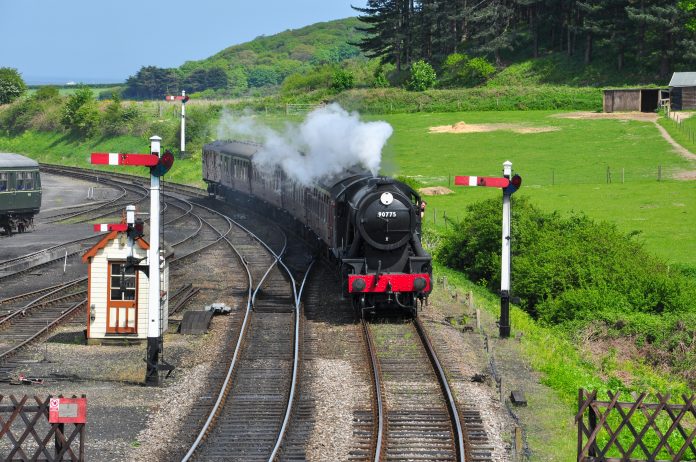Hideto Fujii, Professor from School of Commerce, Meiji University in Japan, describes revitalising rural & urban areas through heritage tourism in this special focus on railways in the UK and Japan
What are tourists seeking through heritage tourism? Heritage is one of the magic words in changing tourist behaviour from one situation to another without its exact meaning considered. Heritage is characterised as flexible and context-depending use of the past in tourism, particularly, being kind of equivalent to consumer goods due to attracting tourists by authentic or man-made raw materials.
It is said that a close relationship exists between the relative economic decline and the advent of heritage tourism from 1970 in the UK, then Japan followed the same path a little later. Both countries faced neo-liberalism since 1980. While neo-liberalism comes in different threads and viewpoints in being intertwined with an ideology, a mode of governance and a policy package, the point of it is to build upon the self-regulating market. This leads us to unstable conditions in society because neo-liberalism facilitates the re-structuring and re-scaling of social relations in accordance with the demands of global capitalism. Judging from the present neo-liberalism world, the past tends to show us a relatively fixed and stable society. Therefore, it can be said that tourists from capitalist countries regard heritage as a symbol of stability due to living in a state of constant flux.
Heritage tourism and comparative, historical & dialogic perspectives
Forming and constituting tourism products and services, heritage tourism needs to satisfy tourist expectations by tangible and intangible elements of the past. Heritage consists of three main elements: built heritage such as relics and modern towns; scientific heritage such as plants, animals, rocks and natural habitats; and cultural heritage like folk and fine arts, customs and languages. This means that heritage tourism basically relates to time and space to be conducted. Also, it should be noted that heritage not only consists of material remnants of the past, but also recent, recreated and replicated attractions.
Our research takes on comparative, historical perspectives on heritage tourism in terms of the railway, intending to revitalise rural and urban areas in the UK and Japan. Comparisons of them are made between similar institutions and the economic, social and cultural structures embedded in them from the historical point of view to minimise variables.
To carry out in-depth analysis, our research adopts dialogism founded by the social philosopher and cultural theorist Mikail M. Bakhtin, too. Heritage tourism has many elements in common with the social relations of people, where employing dialogism, the model of self-other relations, works effectively as a vital tool of research. Although dialogism was first applied to literary studies by Bakhtin, it has recently gained currency in the social sciences as a heuristic method for imagining and analysing the social world, accentuating a holistic and dynamic way of thinking. Several concepts play a role of great significance in dialogism such as heteroglossia, polyphony, genre, chronotopes, carnival and translinguistics, etc. However, chronotopes, among others, provide us a powerful and adaptable device for the analysis of heritage tourism because they, as the matrices of time and space, visually reveal the primacy of time and space in human experiences, situating the stories of tourist products into temporal and spatial continuity (Table 1).

Heritage railways in the UK
Office of Rail and Road (ORR) in the UK defines heritage railways as ”lines of local interest’, museum railways or tourist railways that preserve, re-create or simulate railways of the past; or demonstrate or operate historical or special types of motive power or rolling stock”. Regarding institutionalisation of the heritage railway, there is the Heritage Railway Association (HRA), of which over 300 corporations in the UK are members. The Japanese counterpart of it goes into the Railway Preservation Society of Japan (RPSJ). But compared to HRA, RPSJ is less developed in terms of its contribution to heritage tourism. These organisations encourage heritage tourism to become popular by the heritage railway, despite their difference in characteristics.
Chronotopes positively affect the existence of heritage railways in the UK while they enable us to delve into heritage tourism research. Heritage tourism with a railway is composed of not only the rolling stock of heritage railways, but also heritage landscape such as natural, rural, cultural and the urban/built environment in terms of the matrices of time and space. This suggests that tourism authorities, including government offices and railway companies, are of great importance in combining types of heritage railways with their surrounding landscape, meaning that they must create heritage images of the area by having consistency between time and space to increase the number of tourists.

Research findings on heritage tourism & the railway
It could be said that a typical example of chronotopes in terms of heritage railways is Blackpool Heritage Trams in the UK (Illustration 1). Blackpool Transport operates heritage trams, about half of which were manufactured before World War II, as Blackpool Heritage Tram Tours aim to attract tourists as well as normal operations with modern rolling stock. Blackpool, the world’s first working-class seaside resort, is famous for its surviving architectural heritage originating from the Victorian era, such as Blackpool Tower, the three piers and so on. However, most of these have changed slightly in appearance after their completion in the latter part of the 20th century. This tells us that types of heritage trams must be consistent with their built environment along the line in time and space, offering the meaning of harmony in visualisation with the landscape functioning as tourist attractions.
Our team seeks research collaborators with the same awareness of the issues in the UK and EU countries to make certain that the operations of heritage railways contribute to the revitalisation of their surrounding areas in terms of tourism based on chronotopes (please refer to the contact information).
Please note: This is a commercial profile
© 2019. This work is licensed under CC-BY-NC-ND.











